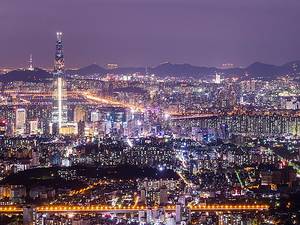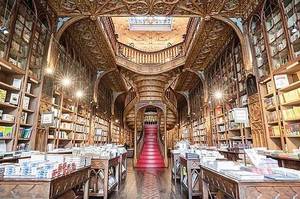Seoul 5 Days
1 cities |
18 attraction(s) |
total distance 110
km
 TIPS
TIPS
Day1
Day2
Day3
Day4
Day5
Day1: Seoul
4 attraction(s) ·
3 km
1
Gyeongbokgung Palace is the first palace built in the early days of the Joseon Dynasty, with a history of 600 years. It was once a grand palace and now showcases delicate beauty. Gyeongbokgung Palace is the largest of the Five Grand Palaces and features unique architecture such as Geunjeongjeon Hall and Gyeonghoeru Pavilion. In addition, there are the National Palace Museum and the National Folk Museum where visitors can explore and experience. Gyeongbokgung Palace is open to the public and there is a ticket office at the entrance of Gwanghwamun. Visitors can also watch the Changing of the Guard ceremony and take photos with the guards, immersing themselves in Korean classical culture.
The name Gyeongbokgung means "great blessings and prospering the nation," reflecting the early aspirations of the Joseon Dynasty. It was completed in 1395 and at its peak had over 390 buildings. During the Japanese invasion in the late 16th century, Gyeongbokgung Palace was burned down and remained abandoned for 273 years. It was restored during the reign of King Gojong but suffered significant damage during the Japanese colonial period, with some buildings demolished and replaced by the Government-General Building. After Korea's independence, Gyeongbokgung Palace gradually underwent restoration, with the completion of the restoration project of Gwanghwamun Gate in 2010. There are also guided tours available in Chinese, departing from the inside of the Geunjeongmun Gate at four designated times.
1
km
2
Blue House, the presidential office and political center of South Korea, gets its name from its unique blue tiled roof. Located in a beautiful area, Blue House is highly regarded among foreign tourists. To visit Blue House, one must apply in advance on the website and once approved, visitors must follow the staff's instructions. Photography is only allowed in designated areas and visitors are not allowed to bring food or record videos. Additionally, foreign tourists must carry their passports when visiting Blue House.
2
km
3
Bukchon Hanok Village is one of the most representative places to experience traditional Korean residential culture. Here, you can feel the authentic living atmosphere as it is a residential area. Therefore, when you visit here as a tourist, please keep quiet so as not to disturb their daily lives. Of course, taking photos here is also an excellent choice. If you want to find the eight major attractions of Bukchon and take beautiful pictures, don't worry about getting lost because there are ground signs to guide you to the best shooting spots. The services here are very thoughtful and convenient for tourists.
1
km
4
삼청동
Samcheong-dong is located on the east side of Gyeongbokgung Palace in Seoul. It is a neighborhood filled with traditional Korean houses and modern cultural vibes. During the Joseon Dynasty, it was a residential area for high-ranking officials, leaving behind many traditional Korean houses. In the 20th century, the Korean government implemented regulations to prohibit the demolition of these houses, leading to strengthened maintenance and preservation efforts, as well as the ban on constructing high-rise buildings. This has made Samcheong-dong the area that best represents traditional Korean architecture, living environment, and traditional village scenery.
Since the 21st century, many businesses such as cafes, traditional tea houses, art galleries, museums, traditional restaurants, international dining establishments, clothing stores, jewelry shops, and leather goods stores have settled in the vicinity of Samcheong-dong, attracting a growing number of visitors. Together with nearby Gahoe-dong, Samcheong-dong boasts a total of 342 art galleries, 669 art galleries, 226 hotels, 3,157 jewelry stores, 54 traditional tea houses, and countless food shops. Therefore, when you step into this area for the first time, the astonishing unique scenery will pique your great interest, and it is impossible to visit all the attractions in just 3-4 hours.
Day2: Seoul
4 attraction(s) ·
7 km
1
Many high-end international stores & restaurants draw crowds to this bustling retail district.
2
km
2
Opened in 1980, this iconic tower offers panoramic views of the city & a revolving restaurant.
2
km
Day3: Seoul
4 attraction(s) ·
4 km
1
1
km
2
Insa-dong, like Shanghai's Tianzifang, is just a step away from Gyeongbokgung Palace. Although its area is not large, with only one main street and a few perpendicular alleys, it was once the residential area of the Joseon Dynasty's noble class. Today, Insa-dong is home to numerous art galleries, museums, and specialty shops. Walking on the stone-paved Insa-dong Street, history is solidified with every brick and tile underfoot, and you can experience the coexistence of classical and avant-garde Korean culture. Here, you can find a Starbucks with a Korean signboard, the most distinctive Korean souvenir store in Seoul, and traditional Korean tea shops, which are treasures of this place. It is definitely an unforgettable experience to have a cup of traditional Korean tea, taste various traditional snacks, and sit in a traditional tea house to feel the lovely atmosphere here. Moreover, you can find some Korean souvenirs that are not available elsewhere! Even locals may not be familiar with the objects in Insa-dong, but the movie "The Scandalous Lady W" by Jang Lee-yeong has added a touch of mystery and interest to this place, which is definitely worth a visit.
1
km
3
Cheonggyecheon is an artificial river in Seoul, South Korea, with a total length of about 13.7 kilometers. It was excavated in the Joseon Dynasty to solve the problem of rainwater accumulation in the city. Cheonggyecheon used to be used as a sewer, but it was transformed into a famous international tourist attraction in 2005. It is the second largest tributary of the Han River and flows into the Han River after merging with Jungnangcheon, the largest tributary, in the eastern part of the city.
2
km
4
Bustling shopping area offering a wide array of traditional food items, plus clothing & souvenirs.
Day4: Seoul
4 attraction(s) ·
34 km
1
Located in South Korea, Everland is a theme park that includes amusement rides, a zoo, and a scenic park, and is also one of the largest theme parks in Korea, consisting of five themed areas. Everland's amusement rides are suitable for both children, such as carousels, ball pits, and cartoon parades, as well as thrilling rides, such as Columbus Adventure, X-train roller coaster, Let's Twist and River Adventure. Additionally, there is a wooden roller coaster called the "T Express," which is 56 meters high, 1641 meters long, and reaches a top speed of over 100 kilometers per hour. The park also has a section for a safari park, where visitors can ride on a safe bus to observe the animals. When you're hungry or tired, the park also provides food service and rest areas.
28
km
2
COEX Aquarium is one of the oldest and most distinctive aquariums in Korea. It has 40 tour tanks and over 140 feeding tanks, housing over 6,000 species of marine life, totaling more than 40,000 individuals. Each tank is divided into six zones, and visitors can enjoy the beautiful underwater world through an underwater tunnel. In addition, the entrance of the aquarium showcases artifacts and a mysterious atmosphere of the Inca Empire, while the Amazon Adventure Hall features rare tropical freshwater fish, adorable otters, and astonishing marine creatures like sharks and axolotls. The World Ocean Hall presents stunning landscapes from California coast, Mediterranean, Antarctic, Arctic, and more, with dozens of predatory sharks, giant sea turtles, and countless fascinating marine fish, giving visitors a sense of being in the real ocean. Visitors can have a closer encounter with small sharks and other fish at the Petting Grass Exhibit, and explore the mysterious world of deep-sea creatures like large crabs and octopuses at the Deep Sea Mystery Hall. Finally, at the Western restaurant in the aquarium, visitors can enjoy a variety of seafood dishes, immerse themselves in the mysterious atmosphere of the sea, and have a wonderful time with the fish.
4
km
Day5: Seoul
2 attraction(s) ·
17 km
1
Lotte Group built "Lotte World" complex next to the Jamsil Sports Complex to accommodate the 1988 Seoul Olympics. It includes a theme park, cultural museum, department stores, duty-free shops, a five-star hotel, a supermarket, and a Hallyu (Korean Wave) destination. Visitors can find products from all Lotte department stores and duty-free shops here. Lotte World has indoor and outdoor theme parks with a mysterious theme similar to Disneyland. There are daily parade performances that are popular among foreign tourists. Visitors need to adjust their schedule as there are often long queues at the amusement park. It is more suitable to visit on weekdays when it is less crowded. Additionally, Lotte Mart is a large supermarket worth visiting, with a wide range of products and affordable prices. Snacks and Korean cuisine ingredients are great gifts and purchases. Lotte World Starlight Avenue is a must-visit spot for Hallyu fans, with many giant lightboxes and limited edition merchandise of celebrities on display. Admission is free with a Lotte World ticket and a receipt from the Lotte duty-free shop. It is recommended to visit this attraction last when visiting Lotte World.
17
km
2





































